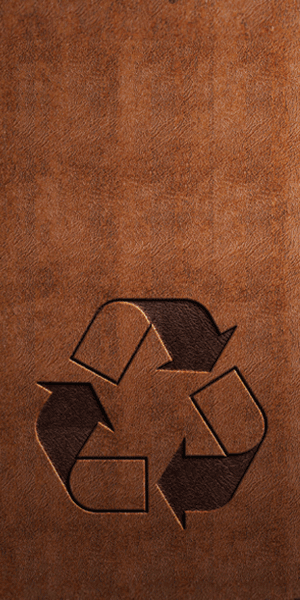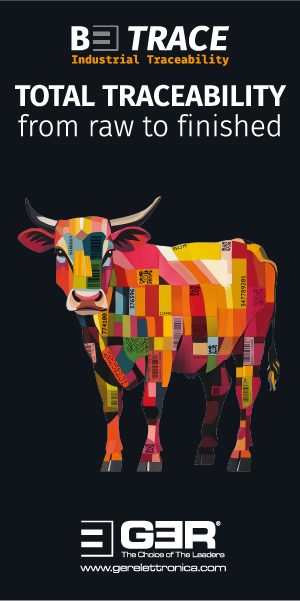Market Intelligence - 25.05.21
Macroeconomics
The outbreak of violence in the Middle East offered a demonstration of the many things that have not changed much with the pandemic. The violence led to more than 200 casualties. There is a ceasefire now but the conflict in the Middle East seems never-ending. This is only one of the many underlying conflicts that were pushed into the background by covid-19, but which have not gone away.
The pandemic continues to be a major problem and the fight this far from over. In several countries we continue to see huge numbers of new infections and others, which seemed to be free, have seen new outbreaks and clusters. It is still completely unclear if there is going to be a new wave or if it can be contained quickly. Mutations are becoming another headache and nobody knows what challenges the virus still might offer for us.
However, in many countries restrictions are easing and cities and regions are beginning their reopening process. This is going to be the next big test. Will falling infection rates and rising vaccinations really be able to contain new outbreaks and offer people the chance to return to something like normal life? In particular for the northern hemisphere this is extremely important, because the summer holiday season is getting very close. Time is short for many want to be fully vaccinated by mid-July.
In the world of economics and business, the main subject is inflation. While the national banks and many politicians had played down the risk of a return to inflation, the number of concerned pundits is now beginning to rise. We remain of the opinion that inflation is back and is certainly going to play an important role for some time now. It is obvious that the national banks have no clear strategy as to how they can deal with rising consumer prices. The huge debts that have piled up around the globe, in combination with massively inflated asset prices, have created a very toxic cocktail. The worst of it is that economists do not have a toolbox for dealing with it.
Prices for food and energy have risen substantially and other commodities and raw materials have reached new record levels too. This will hit the consumer markets in the coming months. Whatever way you look at it, it will hit the poor the most. This is likely to create more social tensions and political stress.
In the commodity markets we saw a bit of correction for many products. Several key metals that had been hitting record prices came down, as did the price of oil. The barrel lost $3 or $4 and was not able to climb above the $70 level.
Gold continues to perform reasonably well; this is another signal of investors protecting themselves against potential inflation risk.
The US dollar continues to be on the weak side and was trading throughout the period in the range of $1.21 to $1.22 against the euro.
Leather Pipeline
The second quarter of the year is traditionally when tanners work their way through existing orders and not much new business is generated. This means that industry players are busy until the summer break, but they are also slowly beginning to think about how they can prepare for the time after.
For suppliers of raw material the situation is straightforward: they only have to try to protect prices and do as much as they can to preserve or improve present levels of business. If they compare the situation of spring 2021 with spring 2020 there is very little to complain about.
For tanners and finished product manufacturers, the situation is somewhat different. Since finished leather prices have a much longer cycle than raw material costs, many tanneries will now have to draw a line under the chances they missed last summer when prices in the raw material market were low.
Finished product manufacturers and consumers will need to watch how things go in the big consumer markets in the second half of the year. In China, consumer product sales have already recovered since last summer and can be called very positive. It remains to be seen if these levels of consumption can be maintained or if consumers were merely taking advantage of cheap finished product prices and could possibly take a break now.
In the US, consumer sales have also recovered quite well. We now have to watch to see how the labour market and consumer spending develop there; it is an economy that depends so much on consumption.
In Europe the situation is a bit different, because shops have been closed for almost a year. There have been temporary reopenings, but in general consumers have shopped on the internet with their purchases focusing very much on home appliances and DIY activities. It seems that in the coming weeks more and more shops and restaurants will be allowed to open and this will give us a clearer indication of what consumers want to do first: shop for garments, shoes and apparel, or spend more money on entertainment and restaurants.
We have lost most of the spring and summer season already; there could just be a short flurry for seasonal products, if they are available to buy.
A big replenishment wave should come after the summer holidays, with the focus switching back from outdoor life and holidays to traditional product consumption. Furniture manufacturers have had an exceptional season but are now afraid that the market might be saturated. This is not the only problem they have: they also have to deal with several challenges in material supply. Other than the price of leather, which is expected to rise significantly, they are also facing sharp rises in the price of wood and foam. In the case of wood, supply shortages are pretty evident already.
In shoes and leathergoods, most manufacturers are taking a very simple position: things cannot get any worse.
The last important sector, automotive, continues to paint a very positive outlook, but the potential risk to production figures, owing to problems in the supply of components, continues to hang over the manufacturers and this could still hit their plans and numbers.
Looking at the raw material markets we have to acknowledge that there is serious difference between the situation in the main producing countries and many other tanning clusters around the globe. This applies in particular to the all-important balance between hide supply from the Americas and Chinese demand. This applies not only to US production, but to all of the Americas.
We assume that most of our readers follow the statistics as closely as we do. The numbers from the US can be considered accurate because they derive from customs offices and are not influenced by commercial interests. These numbers reflect the usual seasonal situation. This is only one side of the coin because the position of buyers in China is the other factor. For this number we have no official statistical data and we have to deal with what we hear from our sources. The information has been pretty uniform. Sales and interest have been significantly under-performing in China. There are unconfirmed rumours of large stocks of wet blue looking for buyers at the moment.
This cannot be truly verified, but it is logical. Without question, Chinese tanners were very active buyers of raw material, starting last summer. Did they buy what they needed with their raw material purchases completely covered by leather orders, or did they do what they have done many times in the past and buy more at favourable prices in the hope of generating profit at a later date? Looking at the market activities of the past eight weeks, a lot points in the direction of the Chinese industry purchasing more raw material than it needed for the current season.
For the moment, the key players are trying to protect their positions. Those who are in a reasonably balanced position can continue to test the market to understand when sellers are willing to sell, and at what levels. This situation could last for a while yet because no seller will be forced to act, at least not until finance or warehouse facilities dictate. It’s not sufficient to analyse the supply and demand situation correctly, timing is also a factor in the equation and is difficult to predict.
The prices of raw material have been pushed too far and too quickly. These prices have to find a solid base again for the start of the new leather season. This may not apply to all global supply origins. We see a difference in the supply-demand balance in Europe and the Americas for example. In other regions, supply plays a different role for the moment. However, sooner or later the US and Brazilian hide markets are the ones that dictate the trends. Only very small niches can disconnect and take their own directions for a time.
The split market is in a similar situation to the hide market. Some niches and specialty products are possibly facing insufficient supply, while many standard splits for the commodity markets struggle to find enough interest. This is certainly also seasonal and, as in the hide market, it might take some time until this is balanced out again.
The skins market has seen a little more activity. In China, buyers are willing to take a chance on cheap lamb and sheepskins when they can still find them. In Europe tanners have to decide if they want to secure supply of new-season lambskins or if they prefer to stay out of the market. They have the perennial problem of having to take raw material decisions before they actually know how good or bad the finished product business is going to be in their main markets.
There is, however, a big difference versus the bovine market and that’s the price level. The prices for average-quality skins have advanced a little in the past months, but on average they are still at the bottom of the long-term cycles. As a buyer you cannot go wrong in securing raw material at the present prices and anyone who doubts this should call a colleague at a tannery processing bovine hides to ask how the past few months have gone.
After the sharp gains in demand and prices in the past nine month, doubts and concerns that leather demand and consequently raw material demand would underperform have certainly faded in the supplier community. The V-curve of raw material prices since last July is considered to be further proof that leather producers always paint far too grim a picture of the situation they face. The truth often lies in the middle. It would be certainly an appropriate strategy to find a solid price-platform giving sellers a safe and stable revenue and buyers a level at which they can manage their business with a reduced level of risk until we all know more about what we to expect for leather demand and leather prices in late summer or early autumn.












